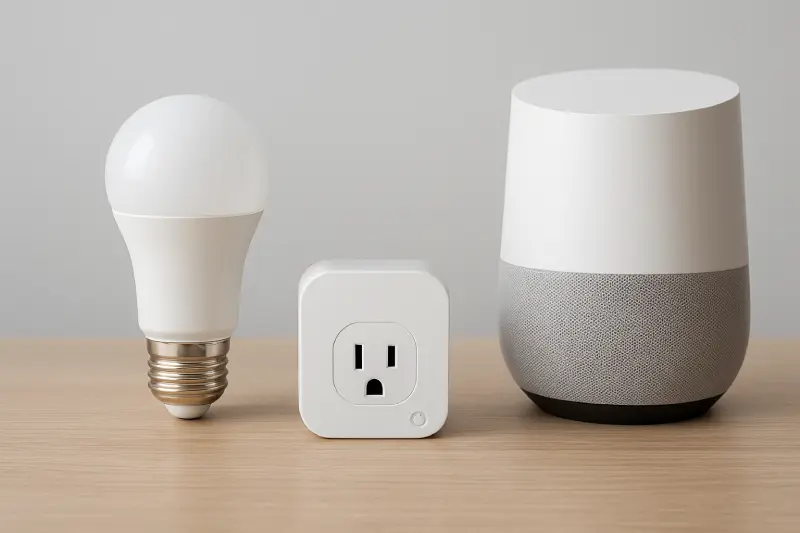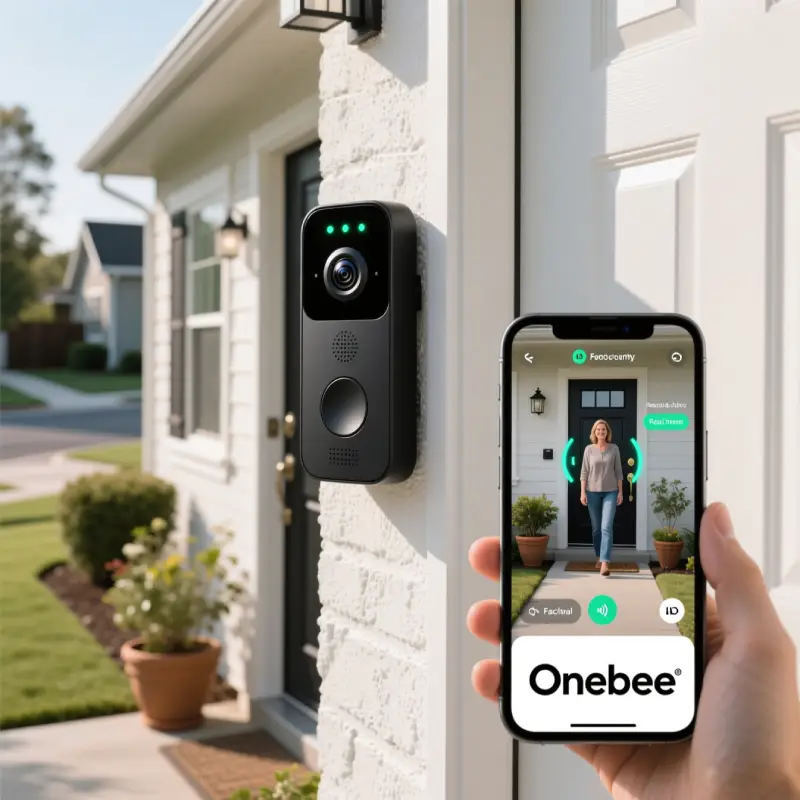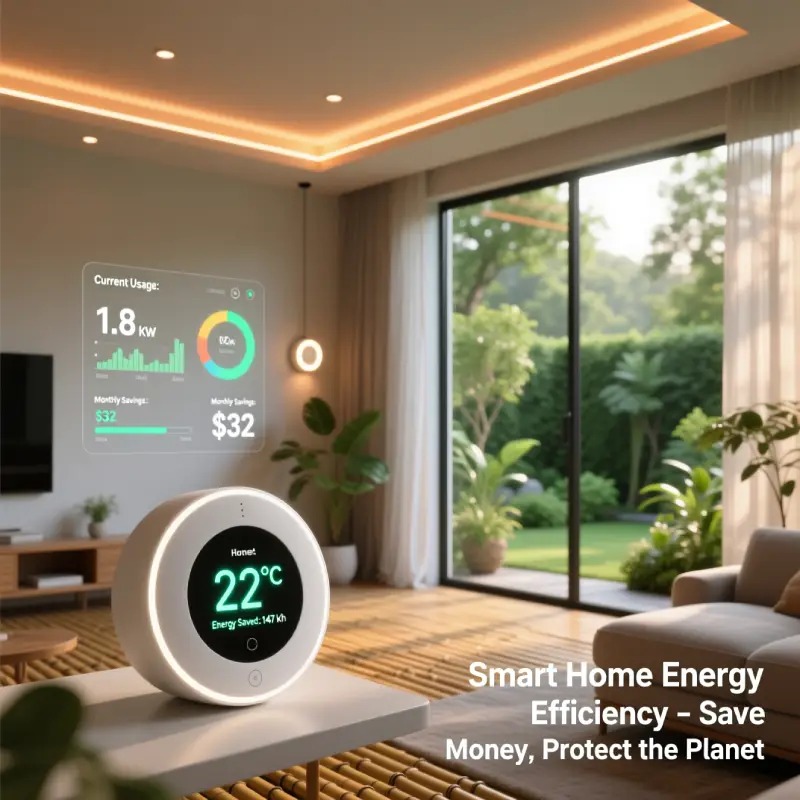Scalable Smart Homes: Start Small, Upgrade Easily - A Beginner’s Guide
- Introduction: The New Era of Smart Living
- What is a Scalable Smart Home?
- Advantages of Scalable Smart Home Approach
- Choosing the Right Foundation: Platforms & Protocols
- Beginning with the Basics: The Basic Smart Gadgets
- Smart Bulbs and Lighting
- Smart Plugs and Sockets
- Voice Assistants
- Smart Security Devices
- Central Hub (Essential to Growth)
- Planning for Growth: What to Avoid
- How to Grow: Your Smart Home Upgrade Roadmap
- Common Mistakes to Avoid
- Conclusion: Scale Smart, Start Smart
Introduction: The New Era of Smart Living
Imagine this: When you enter your home, the lights are turned over softly, your iPod begins playing an album that you love, the thermostat starts to turn up to the optimum temperature. It may seem like you are watching a sci-fi movie scene, right Thanks to scalable smart home technology, this is now a reality.
The current technology enables anybody to make that scene come alive, by adding one device to start with and extending it as one need or can afford it. The real magic? You do not have to restructure your house or spend money to do it.
What is a Scalable Smart Home?
A smart house is a scalable system of devices, appliances and platforms simply a connected system of gadgets, appliances and platforms which can expand with your lifestyle. Scalable solutions have allowed homeowners to start with simple products such as a smart bulb or a Wi-Fi plug and add to it in other aspects as time goes by, instead of investing in a complex and costly system. That comes in-built flexibility and future preparation.
Advantages of Scalable Smart Home Approach
Cost Efficiency: You will only get what you need and upgrade it when your budget permits years to come.
Customized Automation: Don’t add devices without value to your system, add your own when it easily fits.
Future-Proofing: Open systems have the capability of being modified when technology is changed thus will not become obsolete as much as modular systems which are closed to technology changes.
Reduced Stress: You have an opportunity to study on your pace without immediate exposure to the complicated technology.
Choosing the Right Foundation: Platforms & Protocols
The foundation of your smart home matters. It is one of the things that mostly go wrong to most new smart homes owner but it is quite a simple thing!
Choose wisely between open and closed systems:
- Open Systems: These are compatible with devices made by other vendors (e.g. Apple HomeKit, Google Home, Samsung SmartThings, and Matter compatible hubs).
- Closed Systems: Connected to one single brand which may restrict future upgrades, integration and flexibility.
Suggestion: Always choose systems that support Matter or similar open standards to ensure seamless cross-brand compatibility.
Beginning with the Basics: The Basic Smart Gadgets
You do not need to automate your whole house immediately. Attack with these budget-friendly and simple to operate, high-impact appliances:

Smart Bulbs and Lighting
- The simplest and most fun method of starting automation is lighting.
- You can set lights to recreate the effect of sunrise, darken them on movie nights or use a motion sensor to turn the lights on.
Recommended options: Onebee Smart Lighting, Philips Hue, TP-Link Tapo.
Learn more about open smart home standards on Matter Protocol
Smart Plugs and Sockets
-
Make anything out of an ordinary appliance a smart device, such as fans, lamps or a coffee maker!
-
Manipulate already existing gadgets easily without necessarily having to change them.
-
Good entry-level and rental.
Voice Assistants
- The selection of a voice ecosystem such as Amazon Alexa, Google Assistant, or Apple Siri can be used to connect it all.
- Engage easy voice commands to do hands free controls.
- Set up shortcuts and habits: "Good Night" is able to switch everything off in one go.
Smart Security Devices

- Video doorbells, smart cameras and motion sensing cameras have real-time alerts and peace of mind.
- Most of them are relatively simple to install and do not need extensive installation.
Example: Onebee Smart Security Solutions
Central Hub (Essential to Growth)
At first, you will not need a central hub, but it is relevant as your system expands, in particular, to connect devices with disparate communication protocols (Wi-Fi, Zigbee, Z-Wave, Thread).
Planning for Growth: What to Avoid
Avoiding Brand Lock-In:
Never invest fully on a single brand. Select those pick devices that are compatible with other devices to expand on a later stage.
Choose Modular Devices:
Select options with elements that can be added or replaced on a single basis such as modular AV receivers, plug-in smart panels or devices using USB expansion to expand the life of your system.
Centralize Power & Connectivity:
Instructors should run centralized wiring paths in the ever-case that you may be adding devices to the building or renovating it.
Ensure Good Wi-Fi Coverage:
Wi-Fi and plug-based systems are quite effective to most renters.
How to Grow: Your Smart Home Upgrade Roadmap
Identify Pain Points
What are various examples of things that automation can help? Begin keeping up with the high-use facilities, such as lighting, entry, and entertainment.
Add Compatible Devices
Those smart thermostats, fancy security, motorized shades or multi room audio can be introduced as your budget and needs increase.
Update Software Regularly
Ensure that all devices are patched with new software which has added features, enhanced security and greater compatibility with new devices.
Monitor New Standards
Monitor industry standards such as Matter that frequently increase the device integration possibilities.
Review Every 2-3 Years
Test your system to change outdated parts or add new user interface options, including central control panels or better Wi-Fi mesh routers.
Sample Budget: Scalable Smart Home Starter Kit (India)
Not getting up necessarily does not need to cost a lot. An example small starter setup in including average price in India is shown below:
| Device | Average Price (₹) |
|---|---|
| Onebee Wi-Fi LED Bulbs (4) | 4000 |
| TP-Link Tapo Smart Plugs (3) | 3000 |
| Tapo C200 Smart Camera | 3000 |
| Onebee Smart Doorbell | 5000 |
| Onebee Smart Speaker | 3500 |
| Onebee Smart AC Controller | 5000 |
| Total | 23,500 |
These devices are easy to install, relocate, upgrade, and ideal for both homeowners and renters.
Common Mistakes to Avoid
- Combining incompatible equipment: Never purchase equipment when it is not compatible with platforms/protocols.
- Impulse buying: Stick with your upgrade scheme, or you will find yourself with a jumble of a smart home, which is not easy to use.
- Disregarding Wi-Fi quality: To rely on automation, it is essential to consider the quality of Wi-Fi, which means that the router may require an upgrade with bigger houses.
- Leaving security: Change default passwords, install update firmware, and select trustworthy brands helping avoid vulnerability.
Make It Work: DIY vs. Professional
DIY Smart Homes
- The majority of modern tools are meant to be installed by users, and the logic and step-by-step instructions are found on the apps.
- This saves your money in installations and gives you the opportunity to install at own pace.
- Suggested in small medium set up.
Professional Solutions
- It is a consideration option when the property size is large, compound and where the wired system and advanced AV or security is to be integrated.
- The professionals can assist in making plans of the scalability, clean wiring, and future upgrades to be unproblematic.
Creating Everyday Smart Activities
When practices automate your everyday existence: Smart homes are next-level special:
- Morning Activities: The light gradually increases, the shade lifts, and a coffee machine is turned on.
- Away Routine: You get notified as all the non-essential devices are switched off, and a security system is activated.
- Evening Routine: Lights are dimmed, playlist of favourite songs is on and the thermostat is set to a nice and comfortable level.
Sustainability and Future-Proofing

Go green through smart energy usage of automated lighting, thermostats and reduce power bills and environmental harm. Most greener gadgets have lifespan of many years, and open systems means it will match the next generation technologies.
Smart Homes for Renters
Although you are not a homeowner, you can still require a scaled-down, plug-and-play devices such as intelligent bulbs, plugs, and wireless security devices that fit well and can accompany you in your next relocation.
Save Money While Upgrading
- Diwali Sales, Black Friday, and end of year offers are a huge saving.
- Select the devices with package deals or multiple packs.
- Have upgrades in order of largest daily effect (e.g. lighting, security, entertainment).
Interaction With Voice Assistants and Applications
Intelligent homes are convenient with the help of voice assistants. Select the one that suits your lifestyle the most and, when possible, integrate the control of the devices using one app. Most of these platforms can be integrated third party, with custom routines and even to home security platforms to have a single control.
Conclusion: Scale Smart, Start Smart
A scalable smart home isn’t about having the most devices, it’s aboutcreating a scalable smart home is an investment in its possible future comfort, security, and efficiency. The best part? One can start small, become familiar, and enable their application to become strong throughout their life without fear of obsolescence or compatibility nightmares. Your home can become as intelligent as the technology chosen with planning and modular thinking that will make your experience of the smart home as peaceful and easily adaptive as the technology.
Frequently Asked Questions
Which device should one purchase as the first smart home device?
The beginners should use smart bulbs or a smart Wi-Fi plug. being easy to install, cheap and soon demonstrating their benefits in automation are the key features of these solutions.
Is it possible to construct scalable smart homes by renters?
Yes! Most Onebee devices are plug-and-play and require no permanent installation ideal for rented spaces.
Do the smart homes require a central hub?
Not initially. Wi-Fi devices work independently. As your setup grows, a hub will help manage multiple devices and protocols.
Are smart homes secure?
Yes. if you follow best practices: use strong passwords, update firmware regularly, and buy from trusted brands like Onebee Technology.